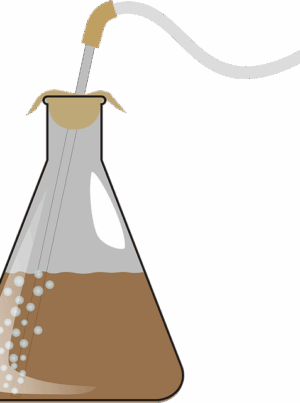Laboratory reports and scientific data are essential for knowledge advancement and research progress. They ensure transparency, reproducibility, and collaboration through detailed documentation. Standardized reporting and effective translation workflows, including automated technologies and professional services, facilitate global dissemination and international cooperation. AI and Machine Translation aim to break language barriers, revolutionizing future scientific communication and accelerating discovery across diverse linguistic communities.
In today’s global scientific landscape, effective multilingual translation is paramount for sharing knowledge and fostering collaboration. This article explores the growing need for accurate laboratory reports and scientific data translations, highlighting its impact on data accessibility and international research partnerships. We delve into crucial considerations like choosing languages, ensuring accuracy, streamlining workflows, and maintaining quality assurance. Additionally, we examine emerging trends, including AI-powered machine translation, revolutionizing how research is conducted and disseminated globally, enhancing accessibility of laboratory reports and scientific data across diverse linguistic communities.
- Understanding Multilingual Translation Needs in Science
- The Impact on Data Accessibility and Collaboration
- Choosing the Right Languages for Laboratory Reports
- Techniques to Ensure Accurate Scientific Translations
- Streamlining Processes: Efficient Translation Workflows
- Quality Assurance in Multilingual Scientific Documentation
- Future Trends: AI and Machine Translation for Research
Understanding Multilingual Translation Needs in Science
The Impact on Data Accessibility and Collaboration
In today’s global scientific community, multilingual translation services for laboratory reports and scientific data play a pivotal role in enhancing accessibility and fostering international collaboration. When research findings are translated into multiple languages, they become accessible to a broader audience, breaking down geographical barriers and enabling scientists from diverse regions to contribute to the body of knowledge. This is particularly significant for field studies, where data collection may involve participants or experts from various countries, ensuring that insights and discoveries are shared and understood across cultures.
Moreover, multilingual translation facilitates collaboration between researchers, institutions, and countries. It enables the seamless exchange of laboratory reports, experimental results, and scientific data, allowing for cross-border research partnerships and the pooling of resources. This collaborative environment accelerates scientific progress by enabling experts to build upon each other’s work, leading to innovative solutions and a deeper understanding of complex phenomena in fields ranging from medicine and biotechnology to environmental science and astronomy.
Choosing the Right Languages for Laboratory Reports
When preparing laboratory reports and managing scientific data, selecting the appropriate languages is a strategic decision that goes beyond simple communication. Different languages cater to diverse linguistic communities and scientific disciplines. For instance, English is widely recognized as the lingua franca in science, ensuring global accessibility. However, for specialized fields like pharmacology or environmental science, translating reports into languages like French, German, or Spanish can significantly expand reach and collaboration opportunities.
Considering the audience and their linguistic preferences is key. Multinational research collaborations require translations that bridge cultural gaps and facilitate seamless data exchange. Moreover, some languages have rich scientific terminology, enabling more accurate and nuanced representations of complex concepts found in laboratory reports and scientific data. This precision is crucial for maintaining integrity and avoiding misinterpretations in critical research areas.
Techniques to Ensure Accurate Scientific Translations
Streamlining Processes: Efficient Translation Workflows
In the realm of scientific research, where precision and clarity are paramount, efficient translation workflows play a pivotal role in streamlining processes for laboratory reports and scientific data. By adopting advanced multilingual translation technologies, research institutions can significantly enhance their productivity and accuracy. Automation becomes a game-changer here, enabling seamless translation of complex technical content without compromising on quality.
This streamlined approach ensures that vital laboratory findings and scientific insights reach a global audience promptly. It allows researchers to focus more on data interpretation and less on translation challenges, fostering international collaboration and knowledge sharing. In today’s digital era, efficient translation workflows are not just an advantage but a necessity for staying ahead in the rapid pace of scientific discovery.
Quality Assurance in Multilingual Scientific Documentation
Maintaining quality assurance (QA) is paramount in multilingual scientific documentation, particularly for laboratory reports and scientific data. As translations span different languages and cultural contexts, ensuring accuracy, consistency, and fidelity to the original content becomes a complex task. Professional translation services employ rigorous QA processes that include multiple layers of review by in-house linguists and subject matter experts.
These processes involve meticulous editing, proofreading, and cross-checking to catch any linguistic or conceptual errors. Using specialized terminology databases, style guides tailored to each language, and even machine learning tools, translators safeguard the integrity of scientific information while respecting cultural nuances. Regular training sessions on the latest advancements in each target language further enhance the quality of translations, ensuring that laboratory reports and scientific data remain reliable and accessible across global communities.
Future Trends: AI and Machine Translation for Research
The future of scientific communication is poised for a significant shift, driven by advancements in Artificial Intelligence (AI) and Machine Translation (MT). As technology evolves, there’s a growing trend towards breaking down language barriers in the realm of laboratory reports and scientific data. AI-powered MT systems are becoming increasingly sophisticated, enabling accurate and efficient translation of complex scientific terminology.
This development promises to streamline research processes globally by facilitating seamless sharing of knowledge and resources. Scientists from diverse linguistic backgrounds can collaborate more effectively, accelerating discovery and innovation. With AI at the forefront, the translation process becomes faster, more precise, and adaptable to the unique nuances of various scientific disciplines, ultimately enriching the global scientific community.
In today’s global scientific community, ensuring accessible and accurate multilingual translation of laboratory reports and scientific data is paramount. This article has explored the growing need for such services, highlighting how it facilitates international collaboration and knowledge-sharing. By choosing the right languages and employing advanced techniques, researchers can streamline their documentation processes while maintaining strict quality standards. Looking ahead, AI and machine translation technologies promise to revolutionize this field, making scientific information even more readily available worldwide.
